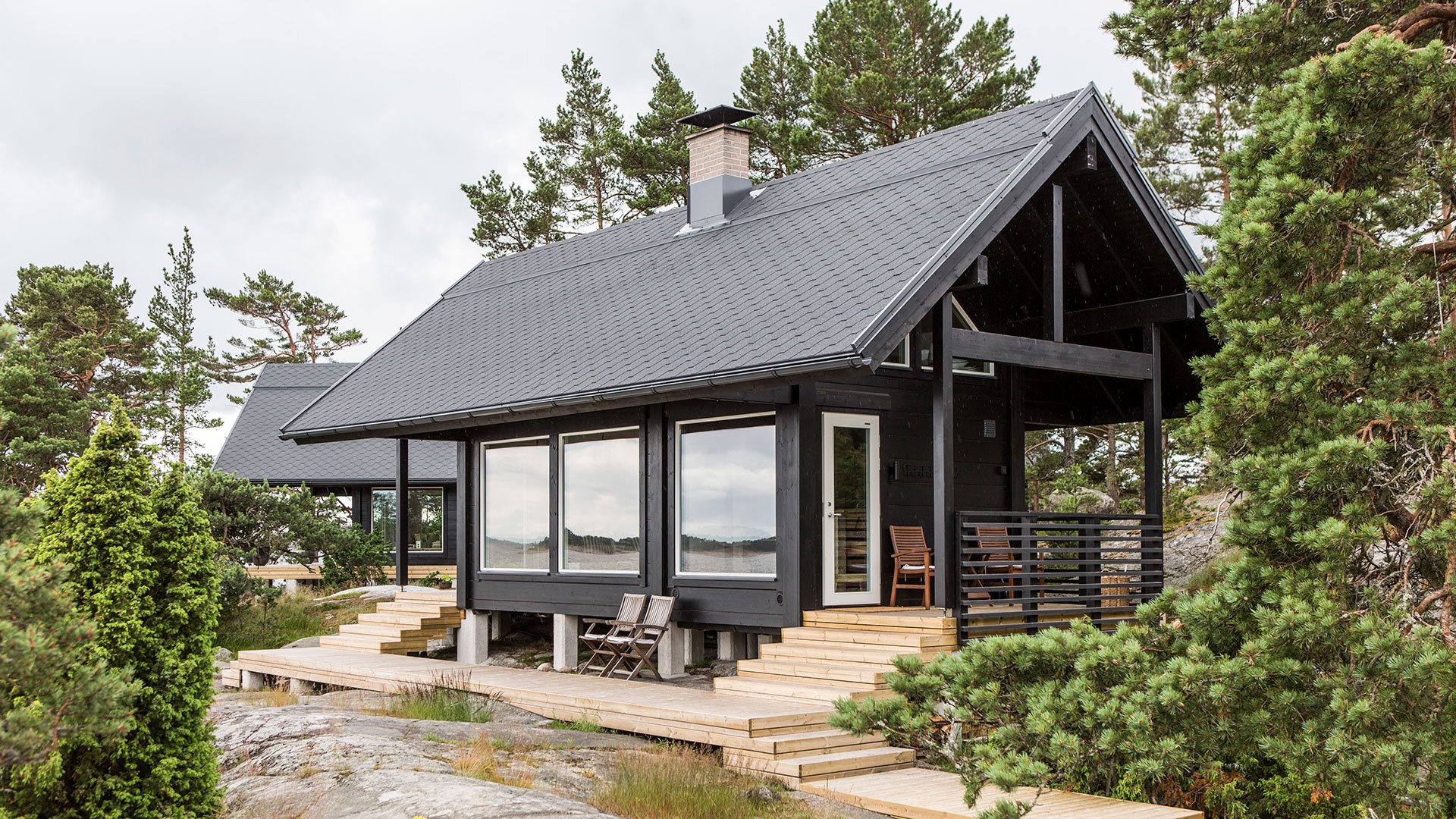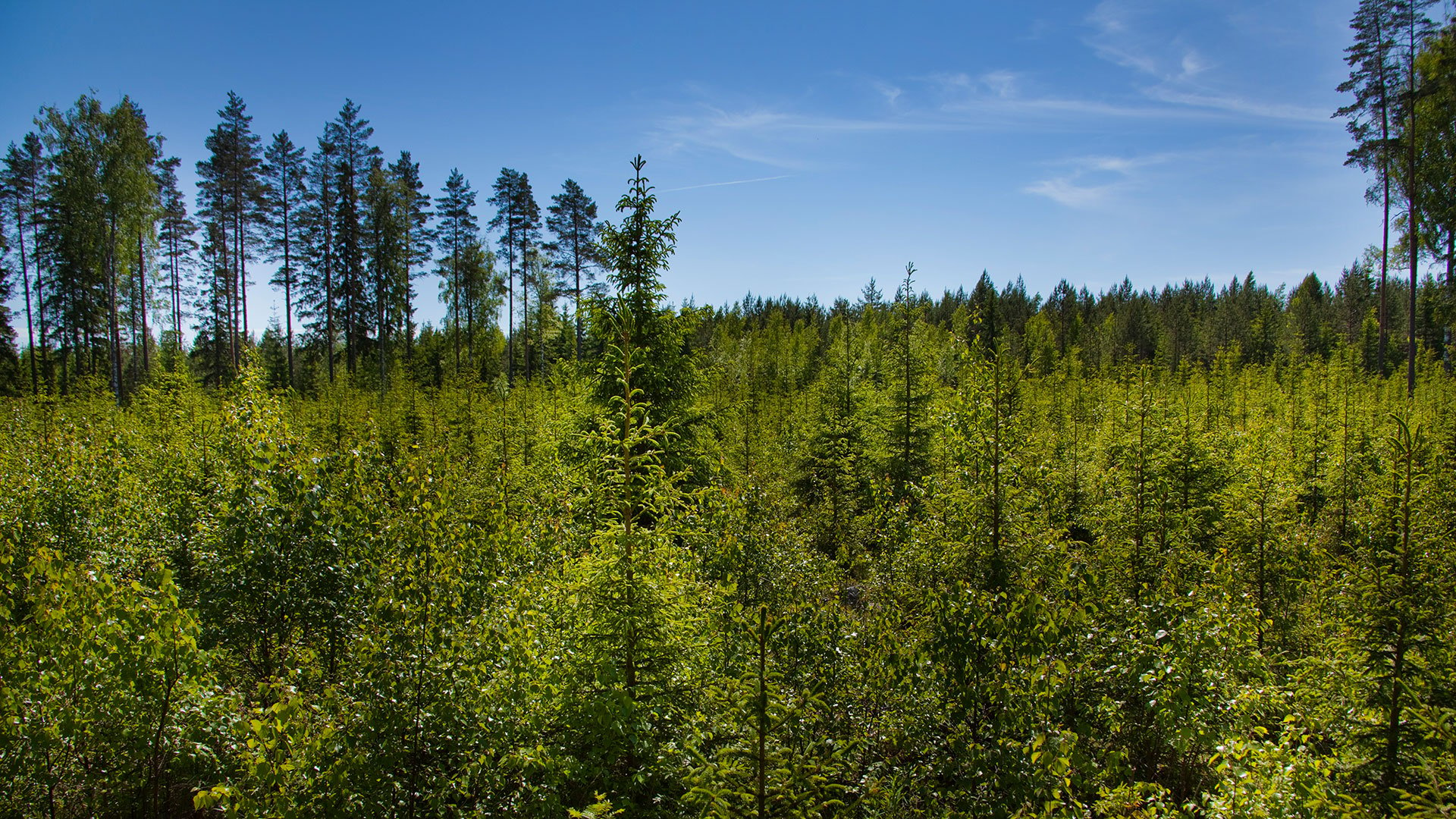One part sink, another part emitter, the forest-carbon relationship cuts both ways. Between 2001 and 2019, the world’s forests absorbed double the amount of carbon dioxide than they released into the atmosphere. As the world looks to cut greenhouse gas emissions, forest experts are implementing measures to improve forest sustainability and further tilt the scales towards sequestration, but they face new challenges from a changing climate.
Forests as carbon sinks
Forests absorb carbon from the atmosphere through photosynthesis, storing the carbon in a wide variety of biomass, including live trees, dead trees, soils and even harvested trees. For example, durable wood products, such as timber used in homes, can store carbon for more than 100 years and even short-lived paper products can retain carbon for the duration of their lifecycle, including through multiple rounds of recycling.
That’s why Petri Heinonen, Environment Specialist at UPM Forest, believes that “out of all terrestrial ecosystems, forests are the most important in fighting climate change.” Although he also notes that “forests are not absolutely safe for carbon.” From natural respiration and decomposition to human-induced activities like deforestation, forests can be net carbon emitters. As these emissions occur at varied time frames – i.e., natural decomposition of forest vegetation takes decades, whereas combustion from a wildfire takes seconds – the actions that forest experts take now will have a lasting impact on forests’ long-term carbon balance.

Wood used in construction can store carbon for more than 100 years.
Photo: UPM
The importance of sustainably managed forests
Achieving a net positive carbon balance is a crucial part of sustainable forest management and Heinonen maintains that “the wood spacing, and the soil fertility are the most important factors. When forests are at optimal density, they absorb more carbon. Therefore, the more fertile the forest, the higher the wood volume, the more carbon sequestered.”
As such, forest experts employ silviculture tactics to encourage sustainable forest growth. “We aim to give the biggest and most vigorous trees more space to grow,” says Heinonen. “When they have space and less competition for nutrients and light, they grow faster and in higher volumes. We therefore remove trees that are smaller, but still competing, and cut stands when they reach a growth culmination point [from 60 to 100 years-old in Finland, depending on the site fertility]”.
In addition, UPM maintains forests at different ages so there is a steady, regular harvest and boosts resilience by using fertilisers and genetically selected seedlings. For example, Heinonen explains that the greater the diversity, the greater the resilience. “In Finland, we accept all the tree species that can grow in the natural environment, and we made a decision to double the volume of broadleaf trees to improve the resilience of the forest to deal with issues like drought and pests.”

In Finland, UPM has decided to double the volume of broadleaf trees to improve forest resilience.
Photo: UPM
Adapting to climate change
Improving forest resilience is particularly important as the climate changes. In Finland, “mean temperatures are projected to increase by 1.5–2°C in winter and 1–1.5°C in summer between 2020 and 2050,” according to Kimmo Ruosteenoja, a climate specialist at the Finnish Meteorological Institute (FMI). “At the same time, precipitation in winter will increase by 0–12% and solar radiation may increase by 2% in the summer.”
“Climate change is going to have both positive and negative effects on forests,” says Marcus Lindner, Principal Scientist in the Resilience Programme at the European Forest Institute (EFI). “In Finland, temperatures are currently a limiting factor, so Finnish forests are likely to absorb more carbon with higher temperatures, but disturbances like fires, storms and spruce bark beetle infestations will also become more frequent and intense, which can damage forests and lead to a temporary loss of carbon. Precipitation and the distribution of rainfall will also be a major factor.”
For Lindner, it’s imperative to improve the resilience of forests to prepare for the unforeseen weather changes. He recommends “using mixed forests instead of pure stands and planting species that can live in that climate”, as well as “using the wood for additional purposes, such as construction, to maximise the climate mitigation potential of forests.”

In a sustainable supply chain, no raw material goes to waste.
Photo: UPM
Sustainability beyond the forest
Sustainability doesn’t stop at the forest border and forest experts should also be looking at ways to improve sustainability across the supply chain. At UPM, Heinonen explains how none of the raw materials go to waste. “The biggest stems go to the sawmills and are used mostly in construction. The small diameter trees head to the pulp mills and paper mills. All the extra material from the sawmill is taken to the pulp mill and even the bark is used in energy boilers for the mills.”
What’s more, Heinonen says UPM has taken efforts to reduce emissions by 30% by 2030 by decreasing operational emissions – i.e., replacing fossil fuels with renewable sources where possible – and cutting transport emissions. “We're trying to get more direct emitting data from trucking companies so we can start managing the reduction of it.”
When it comes to sustainable forestry, there is no-one size fits all approach, but taking the time to adapt now will have far-reaching consequences in the future.
Photo: UPM
